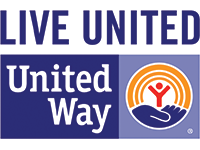Why don’t people move for better opportunities?
 •
•
Jim Tankersley, Editor of Storyline and Jeff Guo, Staff Writer for Storyline
Let’s play a game called “Where Would You Move?” You have two choices, State A or State B.
Here are their vital historical stats, courtesy of the Historical Report of Opportunity, released this year by the groups Opportunity Nation and Measure of America. The report ranks states on a host of economic, educational and community well-being measures, and it calculates for each one an opportunity score, going back several decades. The higher the score, the better the opportunity in that state.
In 1980, State A and State B were both in the middle of the pack on the opportunity scale, 36th and 39th respectively. But over the next 30 years, their fortunes diverged.
Although both states suffered in the Great Recession and their unemployment rates spiked, State B posted large and lasting gains in other areas by 2010. It improved on preschool participation and on-time high school graduation. It reduced its share of youth — 16- to 24-year-olds not in school and not working — and cut its violent-crime rate by nearly two-thirds.
State A also reduced violent crime, although more modestly. But on preschool attendance, high school graduation and youth disaffection, it regressed. By 2010, State B had climbed to 23rd in the nation for opportunity score. State A fell to last place.
So: Where would you move?
For the past 30 years, your fellow Americans have resoundingly picked State A, Nevada. Despite ranking last in this measure of opportunity, Nevada’s populationgrew by 50 percent in the 1980s, 66 percent in the 1990s and 35 percent in the 2000s.
State B, New York, even with large gains in opportunity, had growth of 2.5 percent, 5.5 percent and 2.1 percent.
The grand prize of our game is this insight: There has been no statistical link between this measure of opportunity and migration in the United States over the past 30 years. People aren’t any more or less likely to move to a state with a high absolute opportunity score, or to a state that has improved its score over the past decade. See for yourself:
 It’s well-documented that Americans move less frequently now than they did several decades ago. Federal Reserve economists noted the trend in 2011 and, a couple of years later, offered an explanation: Americans were moving less, they said, because they saw less economic upside to migration. In other words, they saw less benefit in moving for a job change.
It’s well-documented that Americans move less frequently now than they did several decades ago. Federal Reserve economists noted the trend in 2011 and, a couple of years later, offered an explanation: Americans were moving less, they said, because they saw less economic upside to migration. In other words, they saw less benefit in moving for a job change.A job, however, isn’t the only reason you should think about moving somewhere — particularly if you’re raising a family. When you throw in other elements, such as safety and education, as the Historical Report of Opportunity does, you see that there’s a lot of variation that Americans could reasonably employ in figuring out the best places to live. Some states — including Virginia, Maryland, Vermont and Arkansas — have substantially improved their opportunity scores over the past 40 years.
It may be getting harder to see those supplemental improvements, decreased crime rates and increased graduation rates and the like, in the midst of a historically feeble economic recovery. Without job prospects, families can’t simply move to where neighbors are nicer.
“Can you make that assessment when you’re just working to get by?” said Russell Krumnow, the managing director of Opportunity Nation. “A lot of the country is living paycheck to paycheck. Even if you do see those greener pastures, the reality of being able to pick up and go there is pretty difficult.”
Even if you find your perfect opportunity spot, and even if you can swing the relocation, you might not be able to afford it. Some of the nation’s hottest destination states in recent decades — including Nevada — have lured residents with relatively cheaper housing. (The economic driver of New York, New York City, is anything but a bastion of affordable housing.) If economic opportunity flows more to high-rent areas in coming decades, that will reduce the odds that Americans can pack up and chase a better life. The name of the game won’t be “Where Would You Move?” but “Where Can You?”









